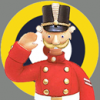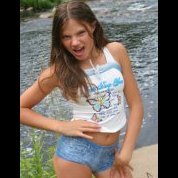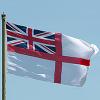-
Posts
171 -
Joined
-
Last visited
Contact Methods
-
Website URL
https://www.vexillummilitaris.co.uk/
Profile Information
-
Gender
Male
-
Location
Swindon, UK.
-
Interests
1/48 British aircraft, or other, in RAF service.
Recent Profile Visitors
3,246 profile views
CplPunishment's Achievements

New Member (2/9)
769
Reputation
-
Changes in weights (fuel tankage) and that 'Spiteful' tall, which included larger horizontal tall surfaces would have changed the balance of aerodynamic forces across the airframe - what one does at one end, impacts what goes on at the other. I am sure I have read something about the impact of the Spiteful tail, but can't find it. Sorry.
-
Thanks for the kind comments and I'm very happy if anything I've learnt can be of use. I'm no photographer, and I'm sure any proper photographer would achieve better results, but what I have picked up is useful. Any hints and tips to improve are always welcome - whether photography or modelling. Cheers, Paul.
-
Another little 'Spider Crab'. It's not until one makes one of these that its small size actually becomes very apparent... This is Airfix's Vampire F.3 released in 2021 with very little added. Just PE seatbelts, a scratch built cockpit entry peg extended and home made decals. Oh, and a lot of lead! Even after filling the nose, I found I needed to add the wing fuel tanks to make use of additional weight added forward of the main gear - more lead stuffed into the nose of each tank! Even so, the model is still a bit nose light. I prefer aeroplanes clean of dangly bits, but I needed the extra lead. The Vampire's tanks, in my view, do look particularly ugly. Hay-ho. The model represents Vampire F.3 VF344 of 247 Squadron based at Odiham in 1949. The airframe scheme is the RAF's post war (and pre-war) High Speed Silver colour all over, or rather my own mix of Tamiya LP-11 and several splashes of matt white. In my view, HSS is more of a dull-ish metallic grey than something looking like polished aluminium so the white just takes the edge off the LP-11 (the fuselage pod is clad in wood, it's not metal skinned!). I took reference from several aeroplanes that looked filthy in order to make the model look more interesting but ended up not taking the weathering as far as the photos showed. The clear coat is mainly light coats of Future rubbed back with a very fine polishing grit. Weathering is mainly with oils of different consistencies. Since the kit is a bit heavy-handed with panel line detail, only panel lines for removable panels were pin-washed. The kit goes together fairly well, except for that horizontal joint around the nose. Some filler and sanding was required here, after some swearing to get a reasonable fit. The gear is fiddly too - it works, it just needs care. 'Test fit' is a good watch word with this one. Here's a reference photo... Photos of the model... And some in colour... And next to a Meteor... Cheers, Paul.
-
Cartridge starter for MkII. Don't know, not sure on this, but it might be rear mirror. One piece for MkI. Circular for MkV. Generally, wheel wells are the same colour as under surfaces - even when black, white, silver undersurface. Pitot tube is a different style - has 2 prongs.
-
Chrissywines started following CplPunishment
-
I think they do test the build process before release. The thing about the wing curve is that not everyone notices it. I've seen a few built and posted uncorrected. If the modeller doesn't notice, or doesn't really know the subject well enough, then this can get missed - as I think it has in the case of the Chipmunk kit. Thanks for the comments! Cheers, Paul.
-
Rod, great! Thanks! The kind of detail I like. There's always more to see if one takes more time, questions and looks more carefully at the available material. I love doing research, but always miss something - props seems to be a theme! I missed the correct makers logo on my Spitfire Vb, and I missed the excessive wear on the rear of blades in harsh conditions. The change to electric starter I missed. But the brake lines need adding - an obvious improvement for PE providers. And your dead right about the nav lights. Going to have to do some corrections! Your restored Chipmunk looks absolutely lovely. Thanks for sharing the link! Again, thanks for the feedback - genuinely, I do appreciate this kind of detail! (guess that makes me a rivet counter!) Paul.
-
Thanks for positive comments! The photography is simple and basic. I don't really do dioramas. Here's the set up.... it's a play mat, a bit of card, some soil sprinkles and a back board with an image printed across three sheets of A4. The camera is on a tripod for long exposures and it's set to f32, 100 (the f32 aperture setting being the most important). After that, I just click with the release on a timer. There's a bit of post clean up to remove the joins in the background image and I tend to knock the colour saturation down a tad.
-
LOLs!! Exactly the process I went through. I was in 1026 Sqdn, ATC. My 3822 is right here beside me - another 3 Chippies to build for my 'flown in' set!! I spent a good while looking for the right code combinations on various decal sheets and ended up buying most of the Xtradecal sets. If only there was a good available Slingsby T.21 glider in 1/48th too! Thanks for the comment! Cheers, Paul.
-
Yeah, best to avoid the boiling water fix. It took a good while and plenty of calm, repeated, gentle heating and bending. Best to cut the pins and glue straight in the first place. It's a shame this seems to be a problem with the kit. Aside from that, I really do love this kit - surface detail, and that canopy is fab. The kit designer really did do a good job getting it too look so good, in my view. Cheers, Paul.
-
Thanks for the positive comments! There's a few things I'd do when I build my next Chippie... The wing build is a key one. Like many have said already, I'd remove the locating pins from the wing halves and glue them together straight. Trying to correct this with boiling water afterward is do-able, but better avoided. The canopy is a master class from Airfix designers - well done! - but a bit daunting when it comes to adding glue. Next time I'll be ready for it. On my model there is a bit of miss alignment on my part after the glue had dried. I won't lose my exhaust pipe from the next kit! I'd replace the wing nav lights for clear plastic. It really needs brake pipes - so obvious on photos of the real thing. The prop blades need thinning down, they're a bit thick and slab-like. The other main things I'd do differently is to add the windscreen earlier and fill the seam around the bottom edge. Like most airframes, the joint between body and windows is usually no more a seam than anywhere else. I don't subscribe to the process of adding canopies last, but in this case I did. The result in the photos is that there's too much of panel line around the bottom edge of the windscreen - not present on the real thing. I'm also not happy about the sharpness of the transition between red and white. I used Tamiya masking tape as always, but I think in this instance I needed to have used something finer/sharper. I forgot to mention, I did add some additional instruments from round rod and solder wire to the top of the front cockpit coving. There's always something that can be improved, always. If anyone has any other thoughts, please do let me know and I'll add them to my list. (On a previous build, someone suggested a set of wheel chocks would make a big difference. A small but powerful comment that I think does make a difference - I made those chocks just for this build). Cheers, Paul.
-
Hi All, A nice little kit. One flaw, and then my own failings caused the rest.... I added a few of the usual aftermarket parts to this kit; resin wheels, PE seatbelts and Xtradecal decals. All good. But I lost the engine exhaust during the build process! Doh! No matter, after checking the references, this airframe had the later stack mod fitted - phew! Except that I wanted to represent the aeroplane as it looked in 1979, 2nd Dec, when I flew in the back seat. Apparently the mod came in after that? Judging by the photos of the real machine it looks like it has been re-built since back then. Anyway, kit is great except for those curved wings - which caught me out. I had to heat-treat them in boiling water to straighten them out. And somehow I managed to get a bad electo-static build up on it too, which I can't get rid of (if there's any proven cure for this, please let me know!). Paint is Tamiya and Humbrol lightly weathered and easy on the panel line wash. All in all, a great little kit and master stroke of marketing by Airfix for us oldies of certain generation who flew Chipmunks while in the ATC. I have more in the stash! The next one will be better! Cheers, Paul.
- 44 replies
-
- 64
-

-
Graham, I used Tamiya lacquer paints, specifically LP11 for the base silver, which seems to be a very smooth and impressive silver, with a touch of White. A little off topic perhaps, but the results can be seen on my Meteor...
-
@TonyOD the RAF used silver dope/paint rather than polished bare metal in lots of applications, from early biplanes to jets - similar silver dope/paint being referred to has High Speed Silver applied to post war jets. So most of the time a reference to 'silver' usually means 'painted'. My personal choice is to use a silver colour that is less reflective, or less silver and more grey - kinda grey that's a bit silvery (😄 highly technical, eh!). Adding a dash of white to a silver paint can get that sort of effect. (Sorry, if I'm teaching egg sucking).








